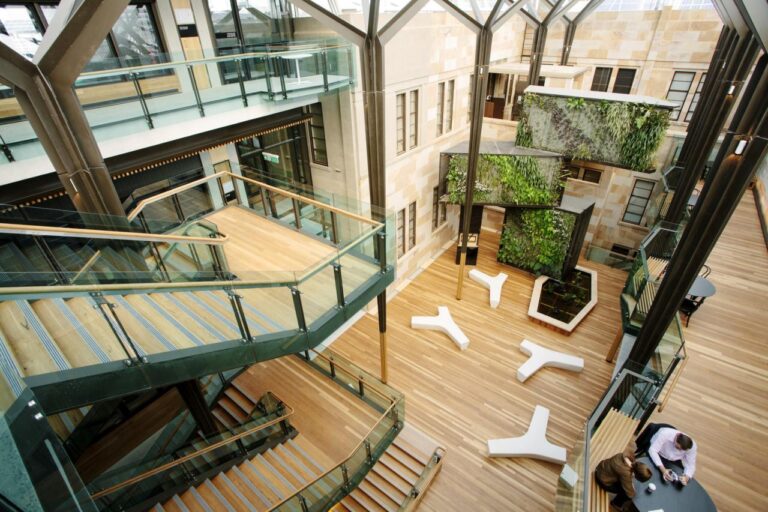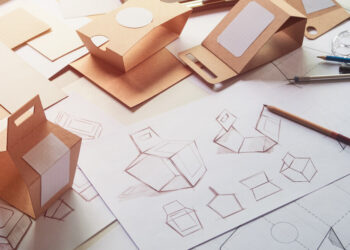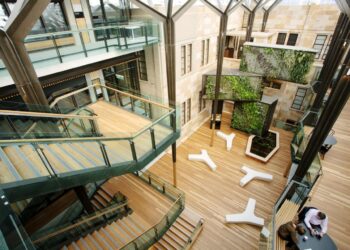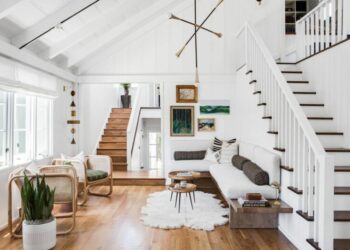In an era defined by environmental urgency and a heightened awareness of our planet’s finite resources, sustainable design has transcended being a mere trend to become a fundamental imperative. It’s a holistic philosophy that permeates every aspect of creation, from the smallest product to the grandest urban plan. Far more than just “going green,” it’s about crafting solutions that meet the needs of the present without compromising the ability of future generations to meet their own needs. This comprehensive exploration delves into the core principles of sustainable design, revealing how they drive innovation, foster well-being, and pave the way for a more resilient and equitable future.
Historically, design often prioritized aesthetics and immediate functionality, with little consideration for long-term environmental or social impacts. The industrial revolution, while bringing unprecedented progress, also ushered in an era of resource depletion and pollution. However, a growing understanding of ecological limits and the interconnectedness of systems has catalyzed a profound shift. Today, designers, architects, engineers, and urban planners are embracing principles that transform waste into resources, minimize energy consumption, enhance human health, and respect biodiversity. This isn’t just about mitigating harm; it’s about actively creating positive change and fostering a symbiotic relationship between human endeavors and the natural world.
Resource Efficiency and Waste Reduction
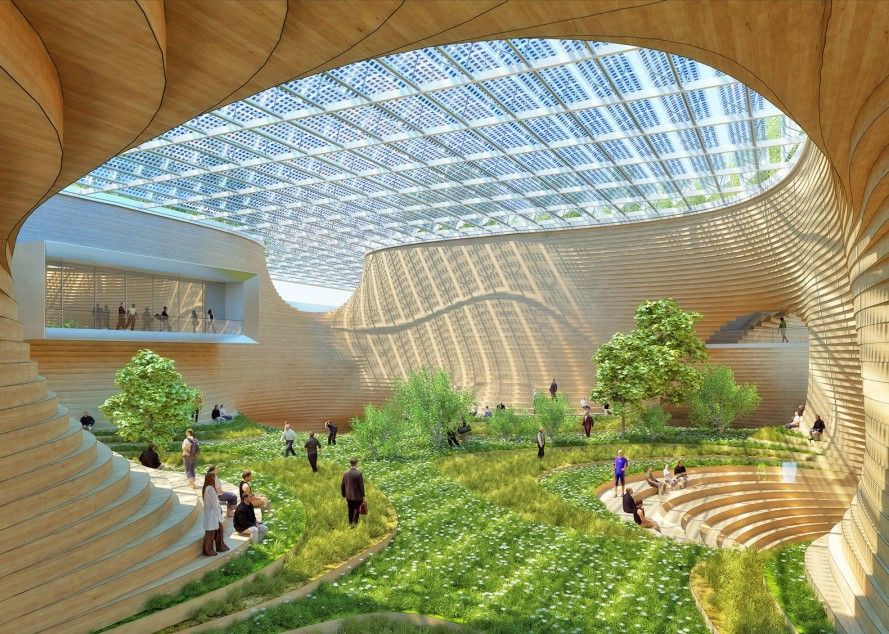
At the heart of sustainable design lies the meticulous management of resources and the relentless pursuit of waste elimination. This principle emphasizes getting the most out of every material and minimizing environmental impact throughout a product’s or building’s entire lifecycle.
A. Reduce, Reuse, Recycle, Repair (The 4 Rs):
* Reduce: This is the most crucial step, advocating for minimizing consumption and material use from the outset. It involves thoughtful design that eliminates unnecessary components, optimizes material dimensions, and reduces packaging. For example, designing a product that uses less raw material for the same function, or a building with a more compact footprint.
* Reuse: Prioritizing the repurposing of existing materials, products, and even entire buildings before considering new production. This includes adaptive reuse of old structures (e.g., converting an old factory into loft apartments) and designing products for multiple lives or functions.
* Recycle: Ensuring that materials can be effectively collected, processed, and remanufactured into new products. This requires designing products with easily separable components and using materials that are widely recyclable. It also necessitates robust recycling infrastructure.
* Repair: Designing products for durability and ease of repair, extending their lifespan and reducing the need for premature replacement. This goes against the “throwaway” culture and promotes a more circular approach to consumption.
B. Circular Economy Principles:
* Beyond Linear “Take-Make-Dispose”: Traditionally, our economy operates in a linear fashion: extract resources, manufacture products, use them, and then dispose of them. The circular economy aims to break this cycle.
* Closed-Loop Systems: Materials are kept in use for as long as possible. Products are designed to be easily disassembled, and their components or materials are either biologically integrated (composted) or technically recycled (reused in new products) at the end of their service life. This minimizes waste and virgin resource extraction.
* Product as a Service (PaaS): Instead of selling products, companies lease them or offer them as a service (e.g., light-as-a-service, carpet-as-a-service). This incentivizes manufacturers to design durable, repairable products that are easy to reclaim and remanufacture, as they retain ownership and responsibility for the product’s end-of-life.
C. Material Selection and Life Cycle Assessment (LCA):
* Low Environmental Impact Materials: Prioritizing materials with low embodied energy (energy consumed during extraction, processing, and transport), minimal toxicity, and high recyclability. Examples include rapidly renewable resources (bamboo, cork), recycled content materials, and local materials to reduce transportation emissions.
* Non-Toxic and Healthy Materials: Avoiding materials that off-gas volatile organic compounds (VOCs) or contain hazardous chemicals that can harm human health or the environment. This includes paints, adhesives, fabrics, and finishes.
* Life Cycle Assessment (LCA): A comprehensive methodology used to evaluate the environmental impacts associated with all stages of a product’s or process’s life, from raw material extraction through manufacturing, use, and end-of-life disposal or recycling. LCA helps designers make informed choices by quantifying impacts like carbon footprint, water usage, and waste generation.
Energy Efficiency and Renewable Energy Integration
Energy consumption is a primary driver of environmental impact. Sustainable design actively seeks to minimize energy demand and transition towards clean, renewable energy sources.
A. Passive Design Strategies:
* Optimized Building Orientation: Strategically positioning a building on its site to maximize beneficial solar gain in winter and minimize unwanted solar heat gain in summer, using the sun’s path to the building’s advantage.
* Natural Ventilation and Cross-Ventilation: Designing building layouts, window placements, and internal air paths to maximize natural airflow, reducing the need for mechanical cooling systems. This can involve stack effect ventilation or strategically placed operable windows.
* Daylighting: Maximizing the use of natural light to reduce reliance on artificial lighting. This involves careful window sizing, placement, light shelves, and light pipes to bring natural illumination deep into the building’s interior, improving occupant comfort and saving energy.
* Thermal Mass: Utilizing materials with high thermal mass (e.g., concrete, brick, stone) to absorb and store heat during the day and release it at night (or vice versa), moderating indoor temperatures and reducing energy fluctuations.
* Shading Devices: Incorporating external shading elements (overhangs, louvers, fins) or landscaping (deciduous trees) to block direct sunlight during hot months, preventing overheating.
B. Active Energy Systems and Smart Technologies:
* High-Performance Envelopes: Designing well-insulated walls, roofs, and high-performance windows to minimize heat loss in winter and heat gain in summer, creating a tighter, more energy-efficient building shell.
* Efficient HVAC Systems: Specifying high-efficiency heating, ventilation, and air conditioning (HVAC) systems, often incorporating heat recovery ventilators (HRVs) and energy recovery ventilators (ERVs) to reclaim energy from exhaust air.
* Renewable Energy Generation: Integrating on-site renewable energy sources such as:
* Solar Photovoltaics (PV): Panels that convert sunlight directly into electricity. Terbuka di jendela baruLicensed by Google House with solar panels on the roof
* Solar Thermal: Systems that use sunlight to heat water or air.
* Geothermal Systems: Utilizing the stable temperature of the earth to provide heating and cooling.
* Small Wind Turbines: Where appropriate, on-site wind generation can contribute to a building’s energy needs.
* Smart Building Management Systems (BMS): Intelligent systems that monitor and control various building functions (lighting, HVAC, security) to optimize energy performance, respond to occupancy, and integrate with renewable energy sources.
C. Energy Auditing and Monitoring:
* Post-Occupancy Evaluation (POE): Regularly assessing the actual energy performance of a building after it’s occupied to identify discrepancies between design intent and real-world usage, and to pinpoint areas for improvement.
* Energy Monitoring Systems: Installing meters and sensors to track energy consumption in real-time, providing data that helps building managers identify inefficiencies and make informed decisions to reduce energy waste.
Water Conservation and Management
Water, a precious and often scarce resource, is a critical focus in sustainable design, aiming to minimize consumption and manage water cycles responsibly.
A. Efficient Water Fixtures and Appliances:
* Low-Flow Fixtures: Specifying toilets, showerheads, and faucets designed to use significantly less water without compromising performance.
* Water-Efficient Appliances: Choosing washing machines, dishwashers, and other appliances with high water efficiency ratings.
B. Rainwater Harvesting:
* Collection and Storage: Designing systems to collect rainwater from roofs and other impervious surfaces and store it in cisterns or tanks for non-potable uses like irrigation, toilet flushing, and laundry. This reduces reliance on municipal water supplies. Terbuka di jendela baruLicensed by Google
* Greywater Recycling: Treating and reusing wastewater from sinks, showers, and laundry (greywater) for non-potable applications. This requires separate plumbing systems but can significantly reduce freshwater demand.
C. Stormwater Management:
* Pervious Paving: Using permeable materials for walkways, driveways, and parking areas that allow stormwater to infiltrate the ground rather than running off into storm drains, reducing pollution and recharging groundwater.
* Rain Gardens and Bioswales: Landscaped depressions designed to collect and filter stormwater runoff, promoting natural infiltration and removing pollutants before they reach waterways.
* Green Roofs: Beyond energy benefits, green roofs absorb significant amounts of rainwater, reducing stormwater runoff volume and delaying its discharge, alleviating pressure on urban drainage systems.
D. Drought-Tolerant Landscaping (Xeriscaping):
* Native Plant Selection: Using indigenous plants that are adapted to the local climate and require minimal irrigation once established, reducing the need for external watering.
* Efficient Irrigation Systems: Employing drip irrigation or smart irrigation systems that deliver water directly to plant roots based on real-time weather data and soil moisture levels, minimizing water waste.
Health and Well-being (Human-Centric Design)
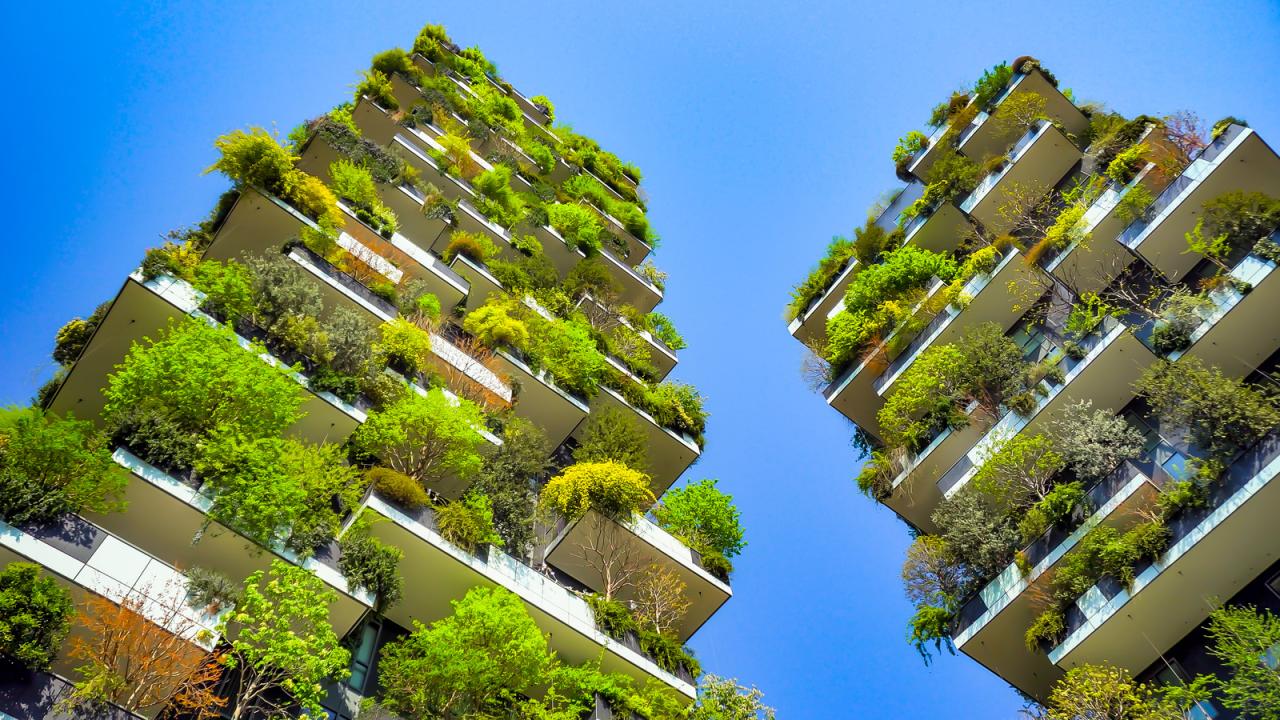
Sustainable design extends beyond environmental impact to prioritize the health, comfort, and productivity of building occupants and product users.
A. Indoor Environmental Quality (IEQ):
* Air Quality: Ensuring excellent indoor air quality through strategies like:
* Source Control: Avoiding materials that off-gas harmful chemicals.
* Ventilation: Providing ample fresh air supply and effective exhaust systems.
* Filtration: Using high-efficiency air filters to remove pollutants and allergens.
* Moisture Control: Preventing mold and mildew growth through proper design and humidity management.
* Thermal Comfort: Maintaining comfortable temperature and humidity levels that are appropriate for the activity level and climate, avoiding extremes.
* Acoustic Comfort: Designing spaces to minimize unwanted noise and reverberation, creating environments conducive to concentration, communication, or relaxation.
* Visual Comfort: Optimizing natural and artificial lighting to reduce glare, minimize eye strain, and support circadian rhythms, enhancing productivity and well-being.
B. Biophilic Design:
* Connection to Nature: Integrating natural elements and processes into the built environment to foster a deeper, innate human connection with nature. This has proven benefits for mental health, stress reduction, and cognitive function.
* Natural Light and Views: Maximizing access to natural light and providing views of nature (e.g., landscapes, trees, sky) from inside buildings.
* Natural Materials and Forms: Incorporating materials like wood, stone, and natural fibers, and using organic shapes and patterns inspired by nature.
* Indoor Plants and Living Walls: Bringing vegetation indoors to improve air quality, add visual interest, and evoke a sense of calm.
* Water Features: Incorporating subtle water elements, like fountains or reflective pools, to add sensory richness and a calming effect.
C. Ergonomics and Accessibility:
* Ergonomic Design: Designing furniture, workstations, and products that fit the human body well, promoting good posture, reducing strain, and enhancing comfort and safety.
* Universal Design: Creating environments and products that are usable by all people, to the greatest extent possible, without the need for adaptation or specialized design. This considers a wide range of human abilities and disabilities.
Site and Ecosystem Preservation
Sustainable design recognizes that buildings and products exist within larger ecological systems and seeks to minimize disruption while enhancing biodiversity.
A. Minimizing Site Disturbance:
* Reduced Footprint: Designing buildings with a smaller physical footprint to preserve natural landscapes and reduce impervious surfaces.
* Protecting Existing Ecosystems: Identifying and protecting valuable ecological features on a site, such as mature trees, wetlands, and sensitive habitats, during planning and construction.
* Minimizing Erosion and Sedimentation: Implementing measures to control soil erosion and prevent sediment runoff into waterways during construction.
B. Enhancing Biodiversity:
* Native Landscaping: Using native plants that support local wildlife, pollinators, and natural ecological processes, creating functional habitats.
* Creating Green Corridors: Designing interconnected green spaces that allow for wildlife movement and enhance urban biodiversity.
* Rooftop Habitats: Developing green roofs that can serve as urban habitats for birds, insects, and other species.
C. Restoration and Remediation:
* Brownfield Redevelopment: Reclaiming and developing contaminated or underutilized industrial sites, reducing pressure on greenfield development and remediating environmental hazards.
* Ecological Restoration: Implementing projects to restore degraded ecosystems on or around a project site, improving ecological health and functionality.
Social Equity and Community Engagement
Sustainable design is not just about environmental performance; it also encompasses social responsibility, aiming to create equitable, just, and thriving communities.
A. Equitable Access and Affordability:
* Accessible Design: Ensuring all designs are inclusive and accessible to people of all ages, abilities, and backgrounds.
* Affordable Housing: Developing sustainable and high-quality affordable housing solutions that contribute to social equity in urban and rural areas.
* Community Resources: Designing buildings and public spaces that provide equitable access to essential services, green spaces, and cultural facilities.
B. Community Participation and Local Economy:
* Stakeholder Engagement: Involving local communities, end-users, and other stakeholders in the design process to ensure that projects meet their needs and aspirations, fostering a sense of ownership.
* Local Sourcing: Prioritizing the use of locally sourced materials and labor, which supports local economies, reduces transportation emissions, and often taps into traditional craftsmanship.
* Fair Labor Practices: Ensuring that all materials and products used in a project are sourced from companies that uphold ethical labor standards and fair wages.
C. Cultural Preservation and Identity:
* Respecting Local Context: Designing with sensitivity to the existing cultural, historical, and architectural context of a place, ensuring new developments complement and enrich the local identity.
* Preserving Heritage: Valuing and preserving historical buildings and cultural landscapes through adaptive reuse and sensitive interventions.
* Celebrating Diversity: Creating spaces that reflect and celebrate the diverse cultures and traditions of a community.
Integration and Holistic Thinking
Ultimately, sustainable design is about adopting a holistic approach, recognizing the interconnectedness of all systems and integrating principles across disciplines.
A. Integrated Design Process:
* Multidisciplinary Collaboration: Bringing together architects, engineers, landscape architects, interior designers, urban planners, and even social scientists from the very beginning of a project to ensure a truly integrated and optimized solution.
* Early Decision-Making: Recognizing that decisions made early in the design process have the most significant impact on a project’s sustainability performance.
* Performance Metrics and Goals: Establishing clear, measurable sustainability goals at the outset and tracking progress throughout the project lifecycle.
B. Long-Term Perspective and Adaptability:
* Future-Proofing: Designing buildings and products that can adapt to changing needs, technologies, and environmental conditions over time, extending their useful life.
* Resilience: Creating designs that can withstand environmental shocks (e.g., extreme weather events, natural disasters) and recover quickly.
* Lifecycle Thinking: Considering the entire lifecycle of a design, from raw material extraction to end-of-life, to minimize overall environmental burden.
C. Continuous Improvement and Innovation:
* Learning from Experience: Continuously evaluating the performance of sustainable designs and applying lessons learned to future projects.
* Embracing New Technologies: Staying abreast of emerging technologies, materials, and methodologies that can further enhance sustainability performance.
* Promoting Research and Development: Investing in research and development to push the boundaries of what is possible in sustainable design.
Conclusion
The principles of sustainable design are not merely a checklist of regulations but a powerful framework for rethinking how we create, build, and interact with our world. By prioritizing resource efficiency, embracing renewable energy, conserving water, enhancing human well-being, preserving ecosystems, fostering social equity, and adopting a holistic, integrated approach, designers are becoming crucial stewards of our planet. This shift towards conscious creation offers a compelling vision for a future where built environments and products not only serve human needs but also actively contribute to the health and vitality of the natural world. The journey towards complete sustainability is ongoing, but by adhering to these guiding principles, we are building a more resilient, equitable, and inspiring future for all.

